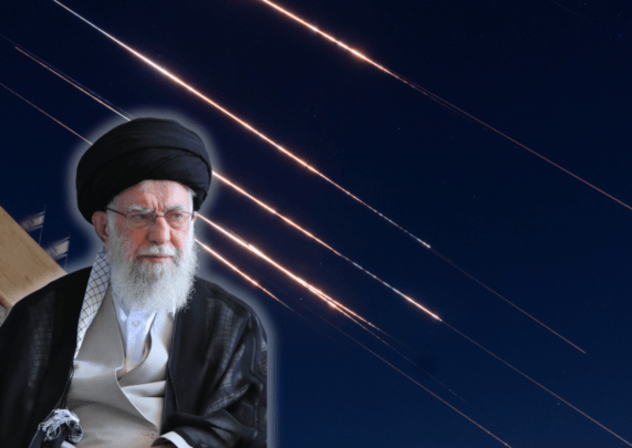The Glass House of Tehran: A Broken Regime Guarding an Unstoppable Bomb

For decades, the world has engaged in a dangerous dance with the Islamic Republic of Iran, a diplomatic charade predicated on a single, foundational lie: that its nuclear ambitions were peaceful. We were told to look at the inspectors, to trust the process, to believe that the centrifuges spinning in the desert were meant only to power cities. That lie is now dead, not slain by foreign intelligence or dissident whispers, but executed in broad daylight by the regime itself.
There is no longer any room for debate. The charade ended the moment the regime’s propaganda machine broadcast the funereal spectacle of its top nuclear scientists being mourned alongside the highest echelons of its military warmongers. The caskets of Iran’s nuclear program architects were paraded shoulder-to-shoulder with those of the Islamic Revolutionary Guard Corps (IRGC) and ballistic missile chiefs like General Salami and General Hajizadeh. This was not a somber farewell; it was a televised confession. In their grief, they inadvertently revealed their deepest truth: the nuclear program and the sword of the IRGC have always been one and the same. The ‘peaceful’ atom was always intended for a military warhead, and now, the entire world has seen the wedding announcement.
Any lingering doubt is incinerated by the regime’s panicked and hostile retreat into darkness. Like a cornered animal, Tehran has turned on the very international bodies designed to provide transparency. They have not just obstructed oversight; they have declared war on it. The Director-General of the International Atomic Energy Agency (IAEA), Rafael Grossi, is now persona non grata, officially banned from the country. Surveillance cameras, our only remote eyes on their activities, have been ripped from the walls. This act of blatant concealment is punctuated by the chilling whispers, amplified within the regime's circles, calling for the IAEA chief’s execution. This is not the behavior of a nation with a benign energy program. It is the raw, undisguised terror of a criminal enterprise frantically trying to hide the body.
And what a body it is. Director-General Grossi has now put the world on formal notice: a stockpile of 900 pounds of highly enriched uranium—material with no plausible civilian use and a direct path to a weapon—is missing. It has vanished. Following recent strikes, the regime has clearly engaged in a frantic shell game, moving its most precious, bomb-enabling assets to an unknown, clandestine location. The implications are staggering. The material for multiple nuclear devices is now off the grid, waiting in a secret location for final assembly. The question is no longer if Iran can build a bomb, but where and when it will reveal the one it has likely prepared.
This terrifying reality is compounded by a devastating admission from Iran’s chief adversary. The Chairman of the U.S. Joint Chiefs of Staff has publicly confirmed that the core of Iran’s nuclear infrastructure, the enrichment facility at Isfahan, is buried too deep to be destroyed by America’s most powerful conventional bunker-buster bombs. Let the weight of that statement sink in. The factory that produces the fuel for Armageddon is, for all intents and purposes, indestructible by conventional military force. The program is hardened, permanent, and unstoppable. Through its own duplicity and engineering, the regime has created a threat that cannot be surgically removed. It is a cancer that has metastasized beyond the reach of the scalpel.
Yet, this image of an invincible nuclear juggernaut is grotesquely juxtaposed with the comical weakness of the regime protecting it. The Mullahs’ carefully crafted image of impenetrable strength was shattered when they were forced to parade Ali Shamkhani, a top aide to the Supreme Leader, on state television. He was a pathetic portrait of failure: leaning heavily on a walking stick, breathing with the help of an aid, a living testament to the precision strike that found him in his own home. This was no defiant display of resilience; it was a humiliating admission of vulnerability. The regime cannot even protect its own inner circle. The Supreme Leader babbles about ‘victory’ to a domestic audience while his top lieutenants are being struck down at will, his claims publicly mocked by world leaders who see him not as a strategist, but as a delusional old man detached from reality.
The final, bitter irony is that the recent strikes, while humiliating for the regime’s leadership, were largely ineffective against the program itself. The IAEA chief estimates the setback in enrichment will only be ‘a matter of months.’ The regime is weak enough to be punched, but its nuclear teeth are strong enough to grow back almost instantly. This combination of leadership fragility and program resiliency is the most dangerous combination imaginable. A weak, wounded, and humiliated regime is an unpredictable one—and this one holds an unstoppable weapon in its hands.
Faced with this undeniable portrait of external failure and internal vulnerability, the regime does what all dying autocracies do: it turns on its own people. A state-sanctioned ‘season of traitor-killing’ is now underway, a vicious internal purge where citizens accused of spying are summarily executed to create a distraction. This is not strength; it is the death rattle of a paranoid state, using external conflict as a pretext to terrorize its populace into submission. The glass house in Tehran has been shattered. All the world can see now is a frightened, broken leadership, presiding over a domestic reign of terror, while jealously guarding the keys to a nuclear holocaust.

